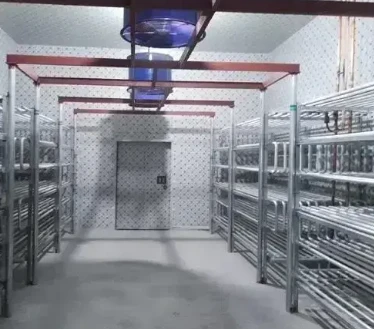Top Companies Specializing in Ice Compression Therapy Machines for Pain Relief and Recovery
The Rise of Ice Compression Therapy Machines A Comprehensive Overview
In recent years, the healthcare industry has witnessed a significant shift towards innovative therapies aimed at improving patient recovery times and enhancing overall physical rehabilitation. Among these advancements, ice compression therapy machines have gained enormous popularity. These devices, designed to provide controlled cold therapy with compression, have proven effective in managing pain, reducing inflammation, and accelerating recovery for many individuals, especially athletes. This article explores the emergence of ice compression therapy machines, highlights notable companies in this market, and discusses their benefits and applications.
Understanding Ice Compression Therapy
Ice compression therapy combines the benefits of cryotherapy with the mechanical pressure of compression. The primary aim is to facilitate healing by reducing swelling and alleviating pain. Cold therapy is known for its vasoconstrictive properties, which minimize blood flow to the affected area, consequently reducing inflammation. Compression further enhances this effect by stabilizing the injured area and helping lymphatic drainage, which is essential for removing excess fluid from tissues.
The Growing Demand and Key Companies
In response to the rising demand for effective recovery solutions, several companies have entered the ice compression therapy market. Notable players include
1. Game Ready A pioneer in the field, Game Ready offers advanced systems that utilize both cold and intermittent compression. Their devices are widely utilized in sports medicine and rehabilitation centers worldwide. The versatility of their products allows tailored treatments for different injuries, making them a preferred choice among clinicians and athletes alike.
2. Breg Known for its commitment to innovation, Breg produces a range of ice compression products designed for postoperative recovery and sports injuries. Their systems are user-friendly and come with customizable settings, catering to the specific needs of patients and practitioners.
3. Polar Products Polar Products provides versatile cold therapy solutions, including ice compression machines for home use. Their focus on affordability and accessibility makes them an excellent choice for individuals looking for effective recovery options outside of clinical settings.
4. Aircast Specializing in orthopedics, Aircast offers products that integrate air splinting with ice therapy. Their devices are designed to provide targeted cold therapy, particularly for chronic pain management and injury rehabilitation.
ice compression therapy machine companies

5. Dynatronics Corporation This company emphasizes the professional healthcare market, offering a selection of ice compression therapy devices that are widely used in physical therapy practices. Their products are meticulously engineered to ensure safety and efficacy.
Benefits of Ice Compression Therapy Machines
The advantages of utilizing ice compression therapy machines are manifold. First and foremost, they provide consistent and controlled therapy, which manual methods often lack. Patients can benefit from the convenience of self-administering treatments at home while still experiencing the effectiveness akin to clinical settings.
Moreover, these machines often come with programmable settings that allow users to tailor the treatment duration and intensity according to their specific condition. The advanced technology ensures optimal temperature maintenance and compression levels, minimizing the risk of complications associated with improper cold application.
Additionally, ice compression therapy machines can significantly improve recovery times following surgeries or intense physical activities. Athletes, in particular, have recognized the value of these devices as essential tools for post-training recovery, allowing them to return to their peak performance levels more quickly.
Applications in Various Fields
The applications of ice compression therapy extend beyond sports medicine. They are invaluable in orthopedic rehabilitation, post-surgery recovery, and even in managing chronic pain conditions such as arthritis. Hospitals, outpatient clinics, physical therapy centers, and home care settings have all embraced these machines as integral components of patient care regimens.
Conclusion
The growth of ice compression therapy machines represents a dynamic shift in how we approach injury recovery and pain management. With an increasing number of companies providing innovative products tailored to various needs, we can anticipate further advancements in this technology. The combination of cold therapy and compression provides a powerful tool for healthcare professionals and patients alike, promising improved outcomes and enhanced quality of life. As awareness and accessibility continue to grow, ice compression therapy machines are likely to become a staple in recovery practices across the globe.
-
Transform Operations with Vacuum Freezer MachineNewsMay.14,2025
-
Enhance Business with Cold Room TechnologyNewsMay.14,2025
-
Vacuum Freezer Machine for Modern NeedsNewsMay.09,2025
-
Discover Our Comprehensive Cold Room SolutionsNewsMay.09,2025
-
Cold Room Solutions for Your BusinessNewsMay.08,2025
-
Advanced Vacuum Freezer MachineNewsMay.08,2025
















































































































